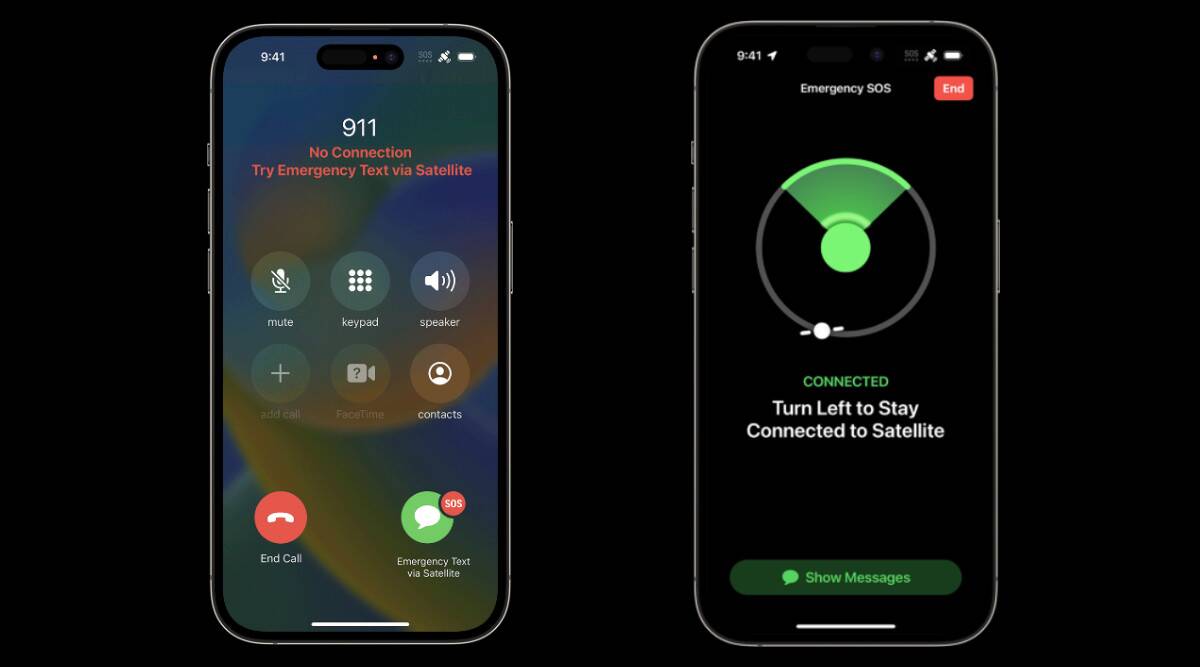Will the new iPhone 14 feature change the world of phones again?
- Tram Ho
iPhone 14 pioneers new technology
Next time you find yourself needing to send a text message while you’re stuck in a place with no cell signal, you can point your phone up to the sky, where low-Earth satellites will help send an emergency message. , no matter what device you hold in your hand.
That is the scenario that observers have in mind after Apple integrates satellite technology into its latest phone model.
Last year, Apple became the first tech company to offer satellite messaging capabilities to its devices, introducing the feature with the iPhone 14 as an emergency call system.
The idea is pretty simple: Point your phone up into the sky, connect it to a satellite flying overhead, and send a text message to emergency services. You can even send GPS data.
Now, other companies are ready to jump on board, making satellite messaging a new trend for the telephony world.
“I think 2023 will definitely be the year of mobile satellite connectivity. People are doing it in different ways,” said Avi Greengart, an analyst at research firm Techsponential.
However, this is not as easy as adding a satellite messaging application and an additional satellite radio to the phone. Low-altitude satellite systems orbiting the Earth must have operating and maintenance costs, just like mobile internet and telephone systems.
Apple said it would give iPhone owners free access to emergency services for two years after purchasing the device, but did not say what would happen after that. Other satellite messaging systems are yet to launch and appear to be capable of charging users.
There’s not much to say about whether this technology could be useful. There have been stories of people being saved thanks to this feature.
The question is whether people are willing to pay for the service. And if not, will satellite messaging just be another fad, like 3D TV?
Currently, satellite technology on phones is for emergencies only and is only available on expensive smartphones like Apple’s iPhone 14, which starts at $799.
But not everyone uses this feature often, because few people fall into danger on a daily basis, which makes this technology even forgotten.
Therefore, it is not the reason consumers need to look when buying a phone. It is sure to appeal to remote hikers, desert racers and off-road truckers who often travel into areas without cellular networks. For others, it’s not an important enough feature to rush to buy.

New future
Apple has partnered with GlobalStar, which has limited coverage in the US, Europe, Australia, and a limited number of regions in South America. Apple has only enabled the feature in certain countries in those continents, and only works as an emergency text message.
Earlier this month, Qualcomm revealed a new feature coming to Android phones that allows users to send and receive text messages via satellite. It uses Iridium and Qualcomm networks with global coverage, which is wider than Apple’s services.
The service, called Snapdragon Satellite, started out just for emergencies but will later be able to exchange social media messages and even use data.
The new feature is not yet available and will appear on phones launching in the second half of 2023 using Qualcomm’s latest high-end chips, although the company is leaving it up to phone makers to decide whether to integrate the technology. this technology in or not.
Analysts say every company is in the race because they can see the potential value of offering satellite networks as a service.
Apple can easily add it alongside its subscription services, such as the $7 per month Apple TV Plus, $10 per month Apple Music Plus, or the $17 Apple One plan.
However, the telephony industry often has little track record in disseminating new technology.
Overall, analysts consider the transition to 5G wireless networks over the past few years to be a disappointment, especially given the uneven coverage and sometimes slow speeds like 4G LTE services that don’t work. we have for many years.
Satellite messaging can be even more complicated than 5G, especially since it depends on the availability of satellites and the unproven extent of having multiple people involved.
We’ve come a long way from needing to buy big, bulky satellite phones if we want to safely venture beyond the range of cellular networks.
Soon, many smartphones will be able to call for help, whether you’ve taken a wrong turn in the wilderness or been attacked by wild animals on a remote island you should have stayed away from.
Source : Genk
